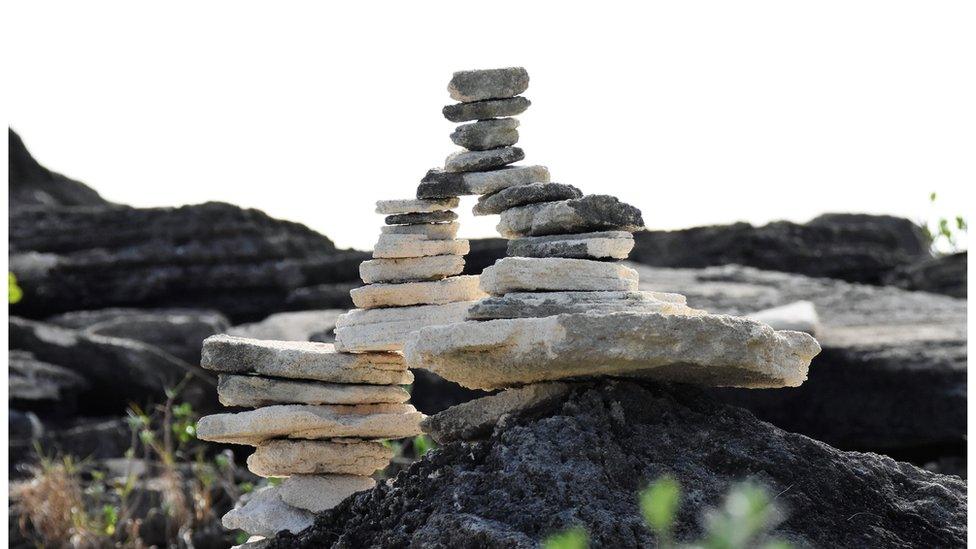Why I kick down Peak District stone stacks
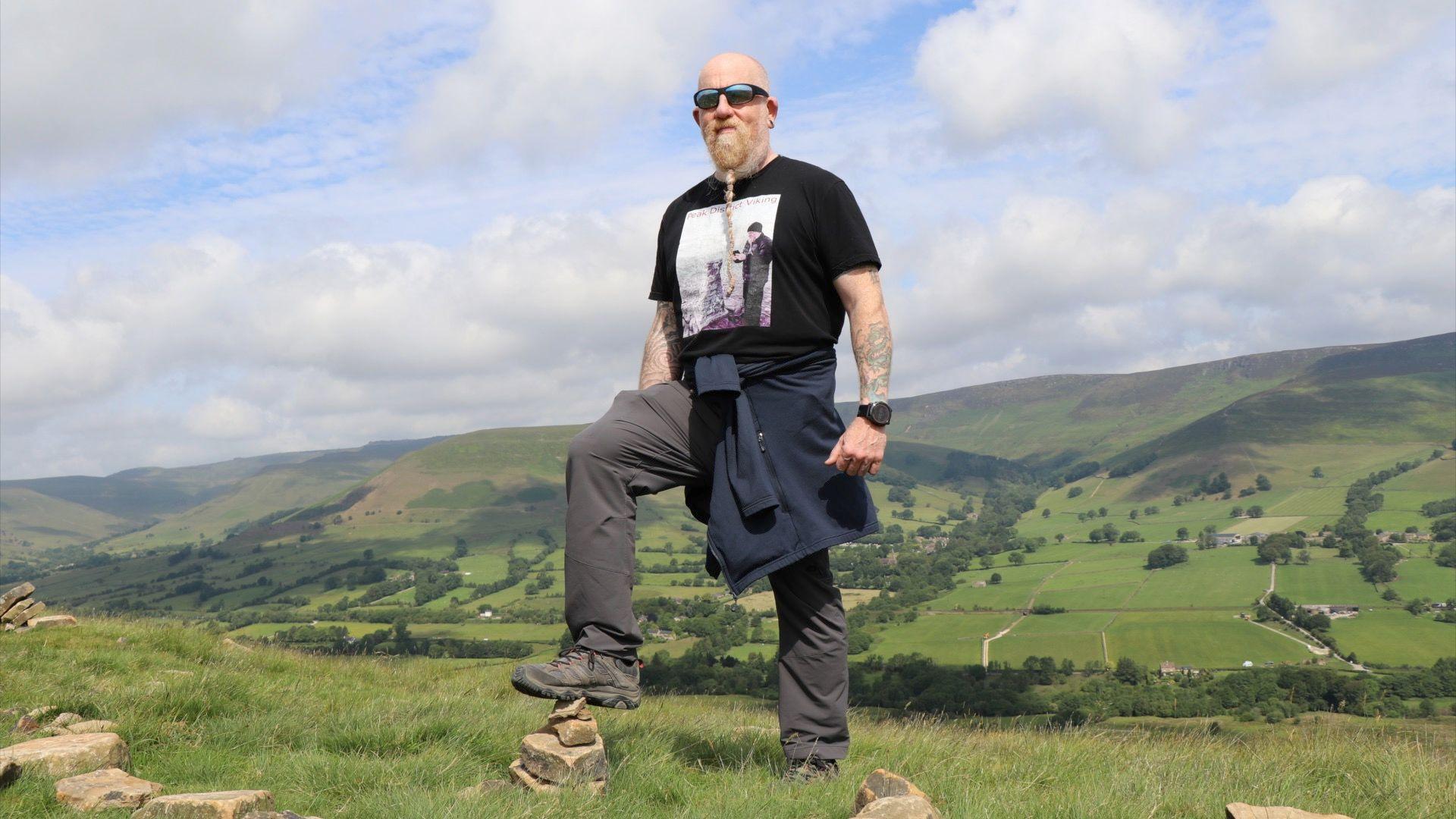
Stuart Cox says he wants to raise awareness of the damage stone stacks do to the environment
- Published
Stone stacks are a common sight along hiking trails up and down the UK.
But one walker is on a mission to highlight the damage they can do to the environment - by kicking them over.
Stuart Cox says some people have been building the stacks - some as tall as 6ft (1.8m) - using stones taken from an old wall near Mam Tor in the Peak District in Derbyshire.
A recent video he filmed of himself kicking down the stacks has been watched more than a million times on social media.
And the Peak District National Park Authority says the structures are "detrimental" to the area, and have become more prevalent in recent years.
Stuart's video shows him kicking over several stone stacks
"Look at this," Stuart says, before swearing in frustration during his Facebook video on 20 May.
"Destroy the lot of them." He then proceeds to kick down a stone stack.
The 57-year-old, who works as a chartered engineer, lives in the Derbyshire village of Castleton, a short drive from Mam Tor.
He's passionate about the area, and regularly documents his hikes on his Peak District Viking page.
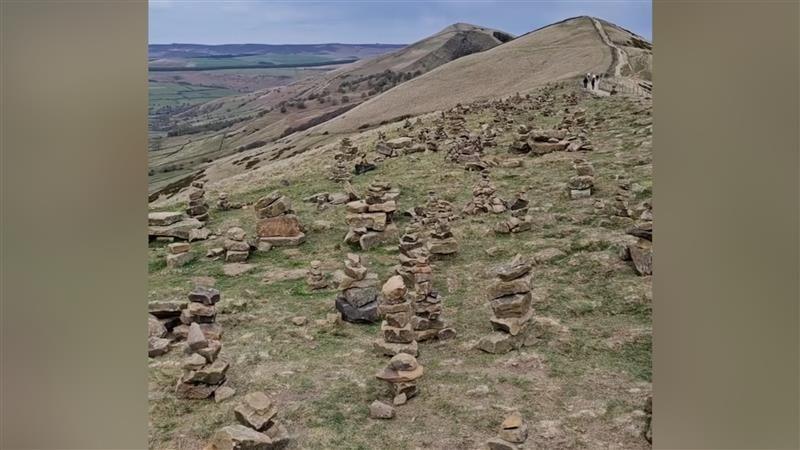
The number of stone stacks near Mam Tor has increased in recent years, according to the Peak District National Park Authority
But his post about the dozens of stacks, built next to the busy Great Ridge footpath - about a 15-minute hike from the summit of Mam Tor - has received the most engagement.
"The majority of people have been quite supportive saying: 'Yeah, I hate them. We reduce them back to their natural state if we see them. Totally agree with you'," he said.
"Then I had the opposite reaction which was: 'Don't tell me what to do. I'll build them if I want and I'll carry on regardless'.
"I even had a couple of threats by private message, but I don't worry about those."
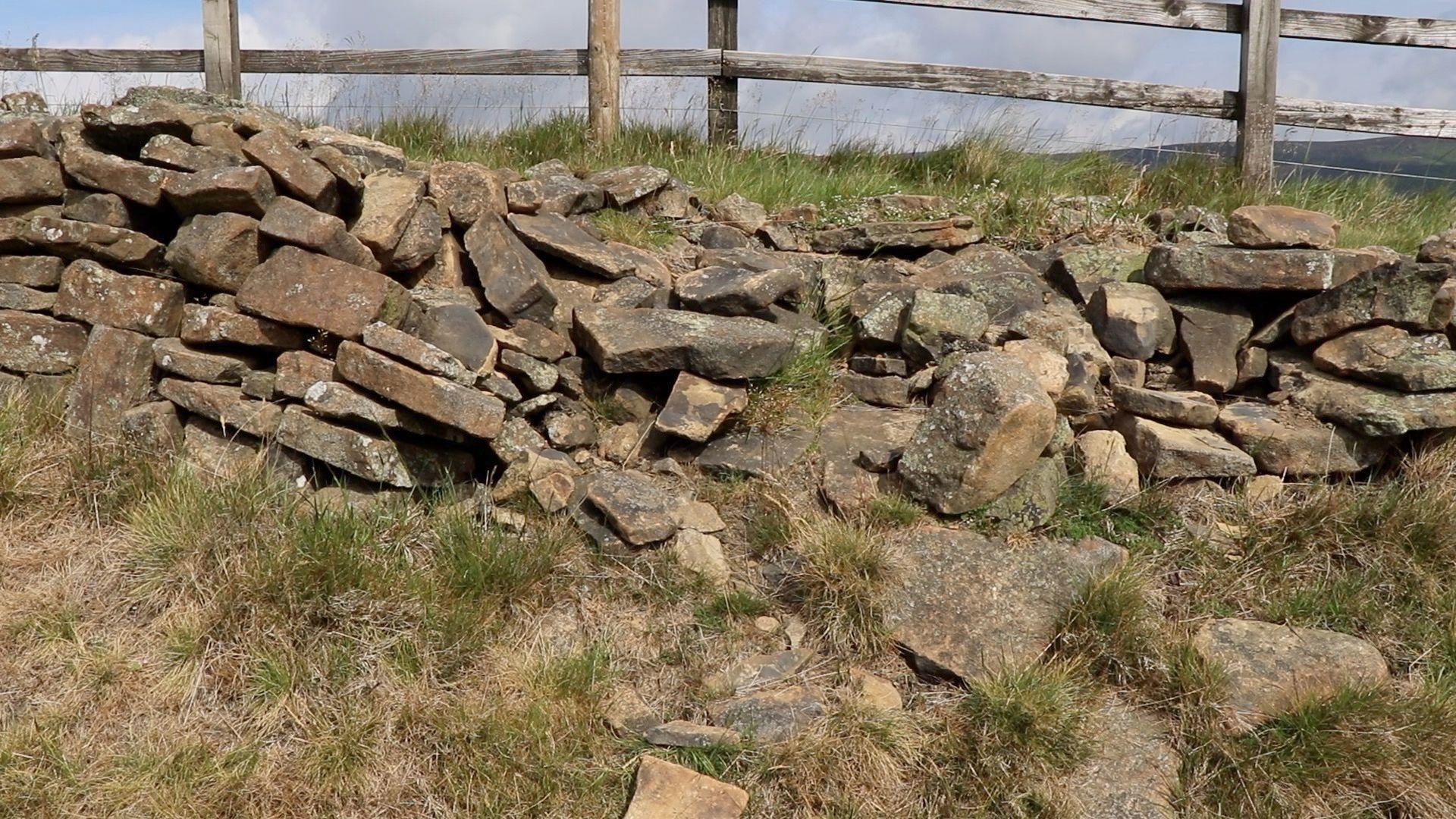
The stones used to make the stacks along the Great Ridge have been taken from an old wall
The Peak District is far from the only location where stone stacks have proven problematic. For example, campaigners said towers of stones on a Scottish beach were a worrying trend.
Stuart says the stacks in his video have been built using stones taken from a former boundary wall, which ran alongside the popular Great Ridge walk.
He is concerned this has damaged the habitats of the small creatures - such as frogs, toads and insects - that lived inside the wall.
It is a view shared by the National Trust.
"The majority of the stone stacks featured in this video are not on National Trust land," a spokesperson said.
"However, there have been stacks created on parts of Mam Tor, and staff and volunteers will infrequently disassemble any found."
The trust says stone stacks have also been an issue on land it is responsible for.
It added rangers had carried out extensive work to protect and preserve the hillfort at Mam Tor, which is a "scheduled monument and is of great archaeological importance".
"The Peak Forest Wall is also historically significant, itself dating back to 1579," a spokesperson added.
"Sadly, the stone stacks are not only impacting the history of the site, but they are also affecting the natural habitats of wildlife that live and feed within these ancient walls.
"In the longer-term, it will disrupt the delicate balance of the landscape."

Stuart says he's received a mixed response to his video
Stuart says there is evidence of stones being removed from paths, which he says could lead to further erosion at an already popular walking spot.
According to The Countryside Code, external, visitors should "leave rocks, stone, plants and trees as you find them and take care not to disturb wildlife including birds that nest on the ground".
Anna Badcock, cultural heritage manager at the national park authority, says the stacks damage the "special qualities" of the national park, external and that the problem has got worse in recent years.
"[Stone stacks] are created by stone removed from historic features," she said.
"They are very detrimental to the historic environment which we have a statutory duty to conserve.
"Like walkers' cairns [a marker along a trail], once one is created, it encourages more."
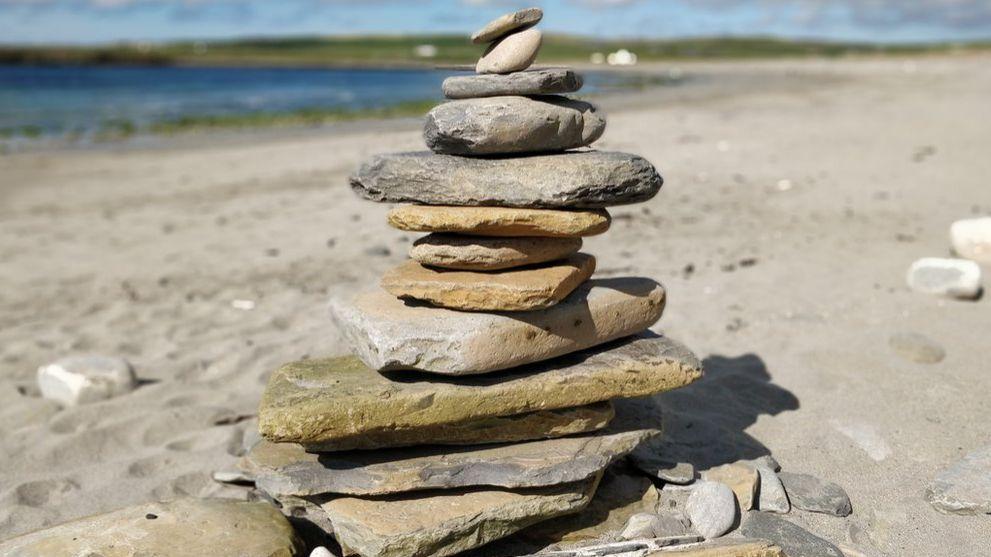
People have been making their mark in the form of stone stacking for centuries
The authority says its rangers generally do not remove the stacks "unless they are dangerous or causing an obstruction on a right of way".
"We're aware that the National Trust rangers have removed some at Mam Tor for this very reason," a spokesperson added.
Stuart said he had tried to make contact with the owner of the land on which the stacks are located, and had offered to help rebuild the wall.
And while his video has attracted some debate on social media, he hopes it might make a small difference to the place he loves.
He added: "I'm very passionate about the area, it's an area people live and work in, and to see it being trashed, you know, it does rile you a bit.
"The more important element [of reaction to his video] was: 'I thought you were a bit of a fool when I first watched the start of the video but by the time I got to the end of it I realised, actually I didn't know that and from now on I will not build the stacks'.
"That's the important bit for me. Even if a handful of people have realised the error of their ways, then that made it all the more worthwhile."
Get in touch
Tell us which stories we should cover in Derby
Follow BBC Derby on Facebook, external, on X, external, or on Instagram, external. Send your story ideas to eastmidsnews@bbc.co.uk, external or via WhatsApp, external on 0808 100 2210.
Related topics
- Published4 May

- Published11 August 2018
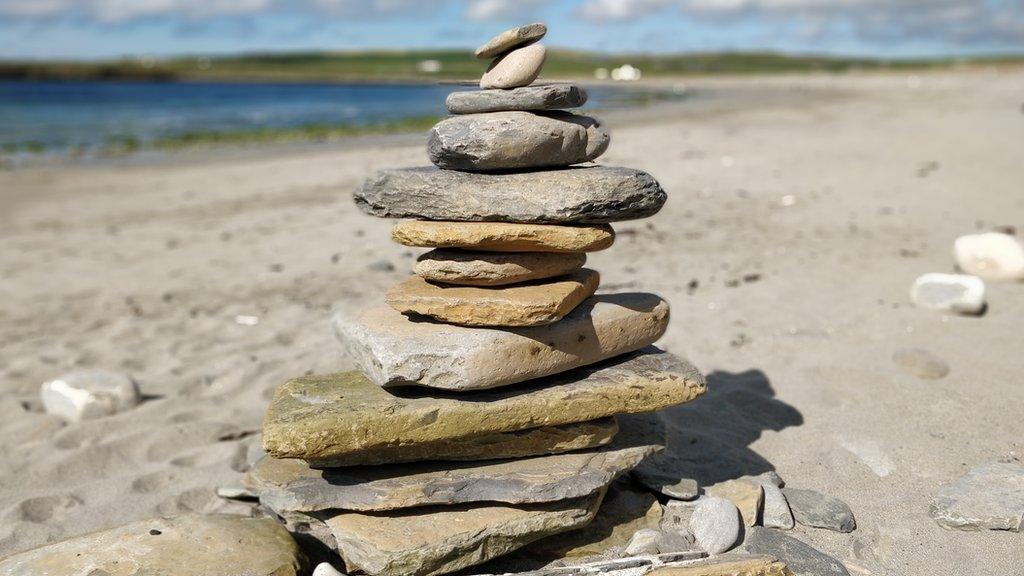
- Published8 December 2016
